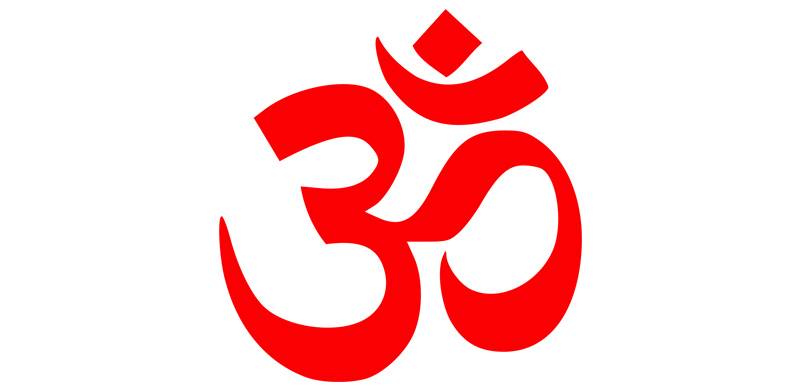
Nadeem Farooq Paracha in this article discusses the evolution of Hindu-nationalism in India since the founding of Arya Samaj in 1875 to the modern-day blurring of the 'line between the militant Hindutva ideology of RSS and the more pragmatic Hindu nationalism of BJP' under Modi.
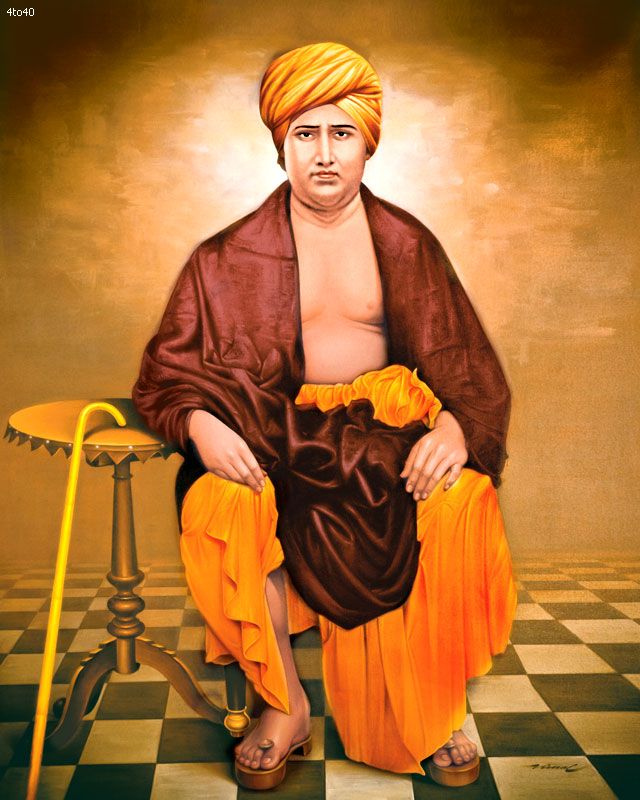
Dayananda Saraswati was the founder of Arya Samaj, the Hindu reformist movement from which much of the future Hindu nationalist movements were derived. The Arya Samaj was established in 1875 as a response to the criticism targeted at certain Hindu rituals by British colonialists. The Samaj discouraged idol worship, the caste system and introduced a monotheistic Hinduism. The outfit also asked Hindus to shun controversial practices such as sati. Even though largely a social movement, the Samaj turned ‘communal’ when it embarked on an aggressive conversion campaign called Shuddhi. Its aim was to convert non-Hindus back to Hinduism because the Samaj believed most of India’s Muslims and Christians were originally Hindu. The Samaj accommodated and facilitated various early Hindu nationalists and was eventually declared a political organization by the British.

A group of Arya Samaj members in the late 19th century.

Hindu monk and reformist Swami Vivekananda in Chicago in 1893. He often travelled to Western countries to promote Hindu concepts of spiritualism, and yoga. He also saw the Hindus as a nation bounded by spirituality. He was hailed as a sage by Hindu nationalists.
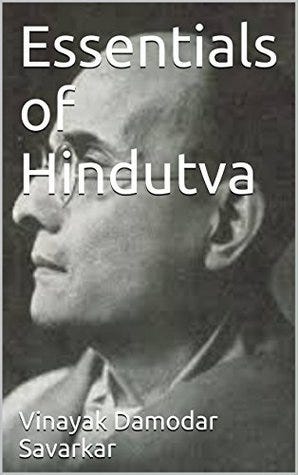
VD Savarkar published The Essentials of Hindutva in 1923. He is often credited for coining the term, Hindutva. Himself an atheist, Savarkar explained Hindutva as a ‘Hinduness’ shaped by the indigenous history, geography, politics and culture of India. Savarkar thus treated Hinduism as a political and cultural idea which would shape a ‘Hindu Rashtra’ (Hindu nation) striving for ‘Akhand Bharat’ (United India). Savarkar emphasized that only those religions born in India, such as Hinduism, Buddhism, Jainism and Sikhism, could be part of Hindutva; and the followers of ‘alien faiths’ such as Islam and Christianity needed to be converted to any of the ‘indigenous Indian religions’ to qualify being called Indians; or to retain their converted faiths in Akhand Bharat, they needed to acknowledge their Hindu roots.
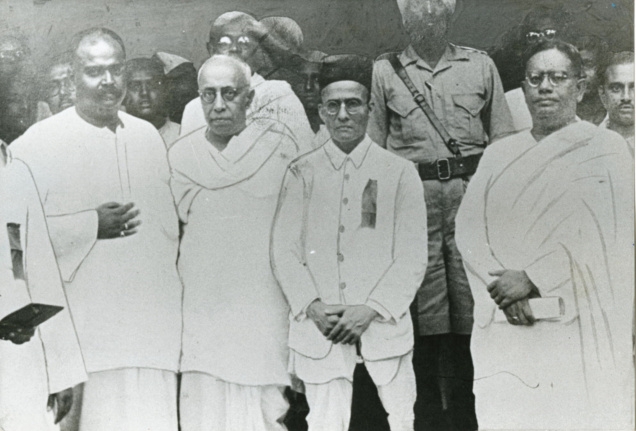
Savarkar with leaders of the Hindu Mahsabha, a Hindu nationalist group associated with the Indian National Congress (INC).
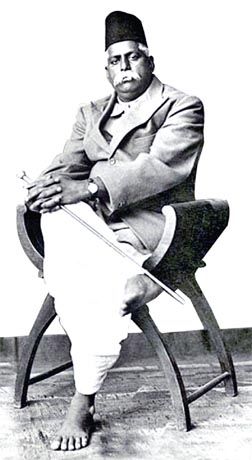
Keshav Baliram Hedgewar, founder of the extreme-right Hindu nationalist organization, the Rashtriya Swayamsevak Sangh (RSS). Formed in 1925, its intent was to unite the Hindus to shape a Hindu Rashtra. It emerged as a strict paramilitary organization that added a dimension of masculinity and militancy to Savarkar’s idea of Hindutva. RSS was involved in violent clashes with Muslims early on and considered them to be bigger enemies than the British. Many members of the Hindu Mahasabha also joined the RSS.
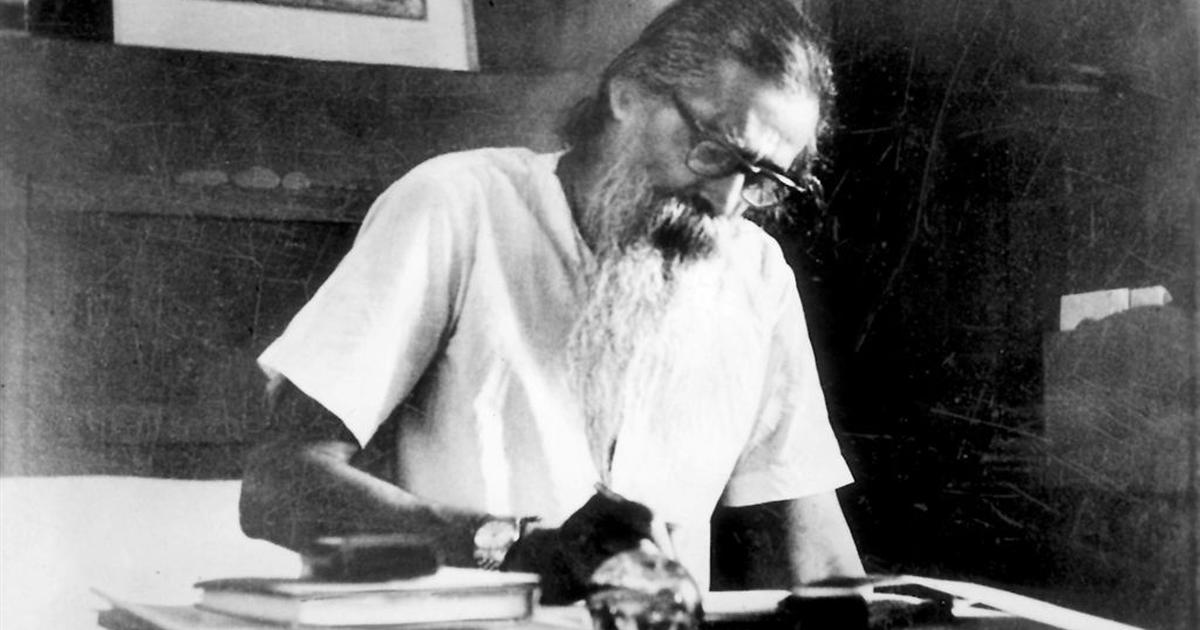
M. S. Golwalkar took over the leadership of the RSS in 1940. The outfit continued to grow under his leadership. RSS hardened its stance against Muslims while at the same time refused to take part in any movements against the British, including those by the INC. Golwalkar and the RSS did not hide their admiration for Italy’s fascist leader Benito Mussolini, and Germany’s Nazi leader, Adolph Hitler during World War 2.
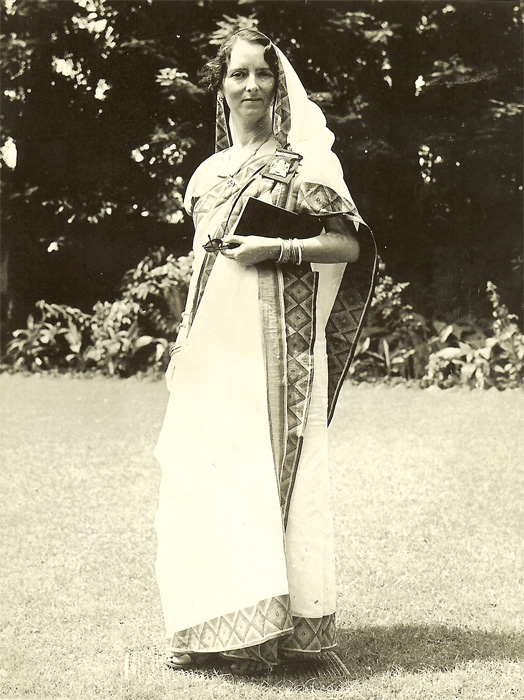
Savitri Devi (birth name, Maximiani Portas) was a French author who converted to Hinduism during a visit to India in 1932. After renouncing her French citizenship in 1928, she adopted Greek nationality and also became an early supporter of Nazism. She converted to Hinduism in 1932 after meeting some Hindu nationalists in India who were also impressed by Nazism. In 1939, she wrote A Warning To Hindus in which she supported the demand for a Hindu Rashtra and action against the Muslims and Christians of India. During World War 2, she worked as a German spy in British India and declared that Hitler was the manifestation of Hindu deity Vishnu.

Hindu nationalist, Nathuram Godse, in court for assassinating Mahatma Gandhi in 1948. Godse had been radicalized during his stay in RSS and the Hindu Mahsabha. Both outfits had criticized Gandhi for ‘appeasing Muslims.’ Godse was executed in 1949.
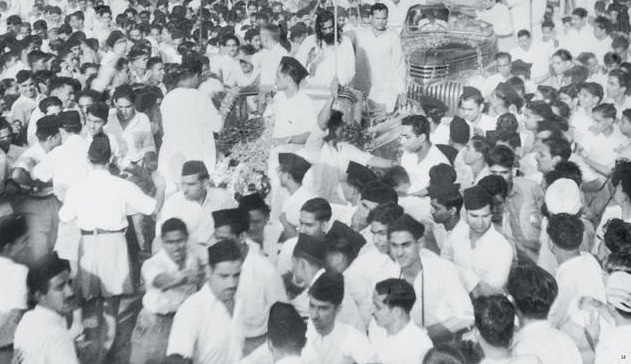
The RSS protested against the Constitution of India that was passed by the Constituent Assembly in 1949. RSS bemoaned that the Constitution did not contain any laws from the sacred texts of Hinduism.
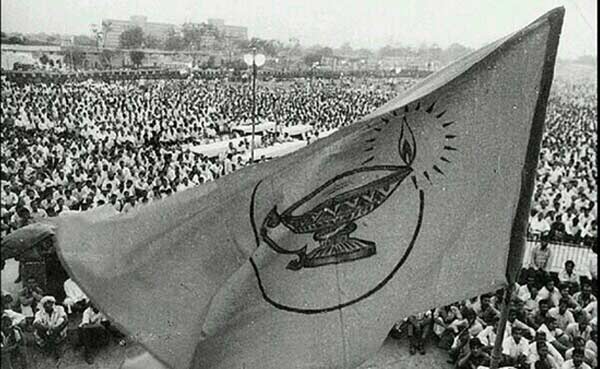
In 1951, the RSS helped former INC/Hindu Mahsabha member, Syama Prasad Mukherjee, to form the Bharatiya Jana Sangh (BJS). He had opposed the introduction of Article 370 in the Constitution which gave Jammu & Kashmir special status. BJS stood for the imposition of ‘Ram Raj,’ a nationwide ban on cow slaughter, and aggressive policies against China and Pakistan. Even though BJS could not win many seats during elections, it did attract support from big businesses that were against INC’s then socialist policies. By the 1960s, BJS had entirely become the political arm of RSS.

In 1960, during a lecture at the Gujarat University, Golwalkar said ancient Hindus had conducted successful experiments to breed perfect Hindus who were superior — as in strong and fair complexioned. Fact is, this idea was adopted by RSS from the Nazi concept of ‘Lebensborn’, a breeding program to create the ‘perfect Aryan Race.’
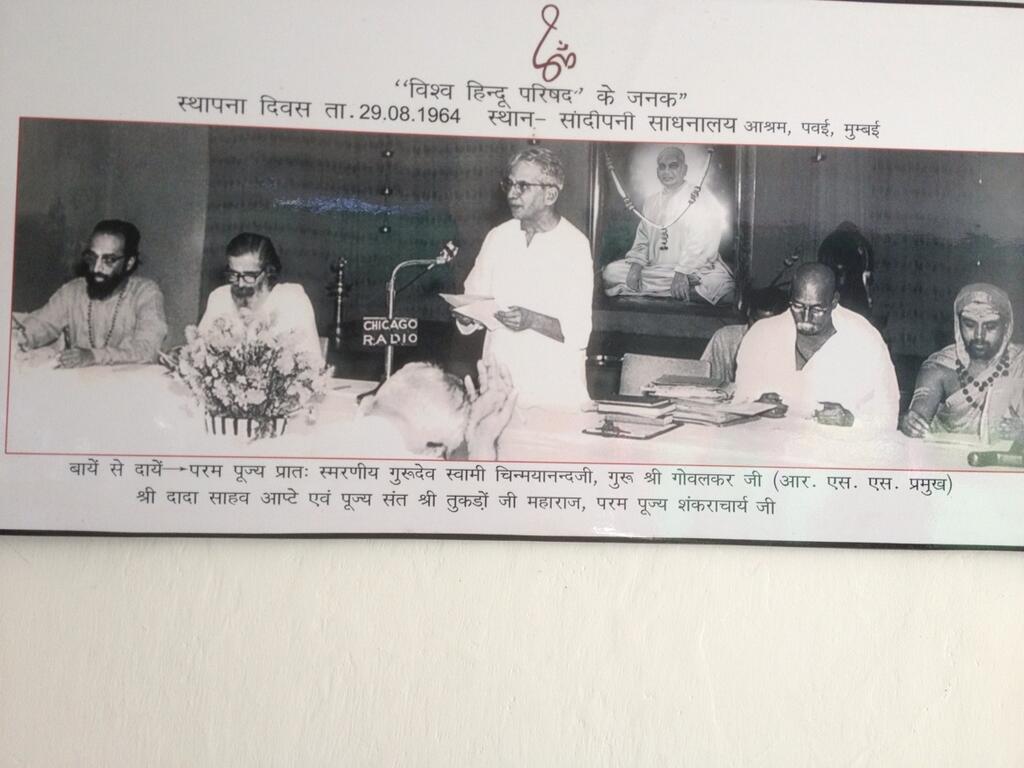
In 1964, Golwalkar formed another Hindu nationalist outfit, the Vishva Hindu Parishad (VHP). Led by the RSS, the VHP’s stated goal was to organize and consolidate the Hindu society according to Hindu Dharma.
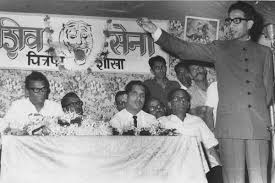
In 1966, Bal Thackeray formed the Shiv Sena. Originally formed as an anti-migrant party in Mumbai, it gradually expanded its appeal by adopting Hindu nationalism and a rigid anti-Muslim stance.
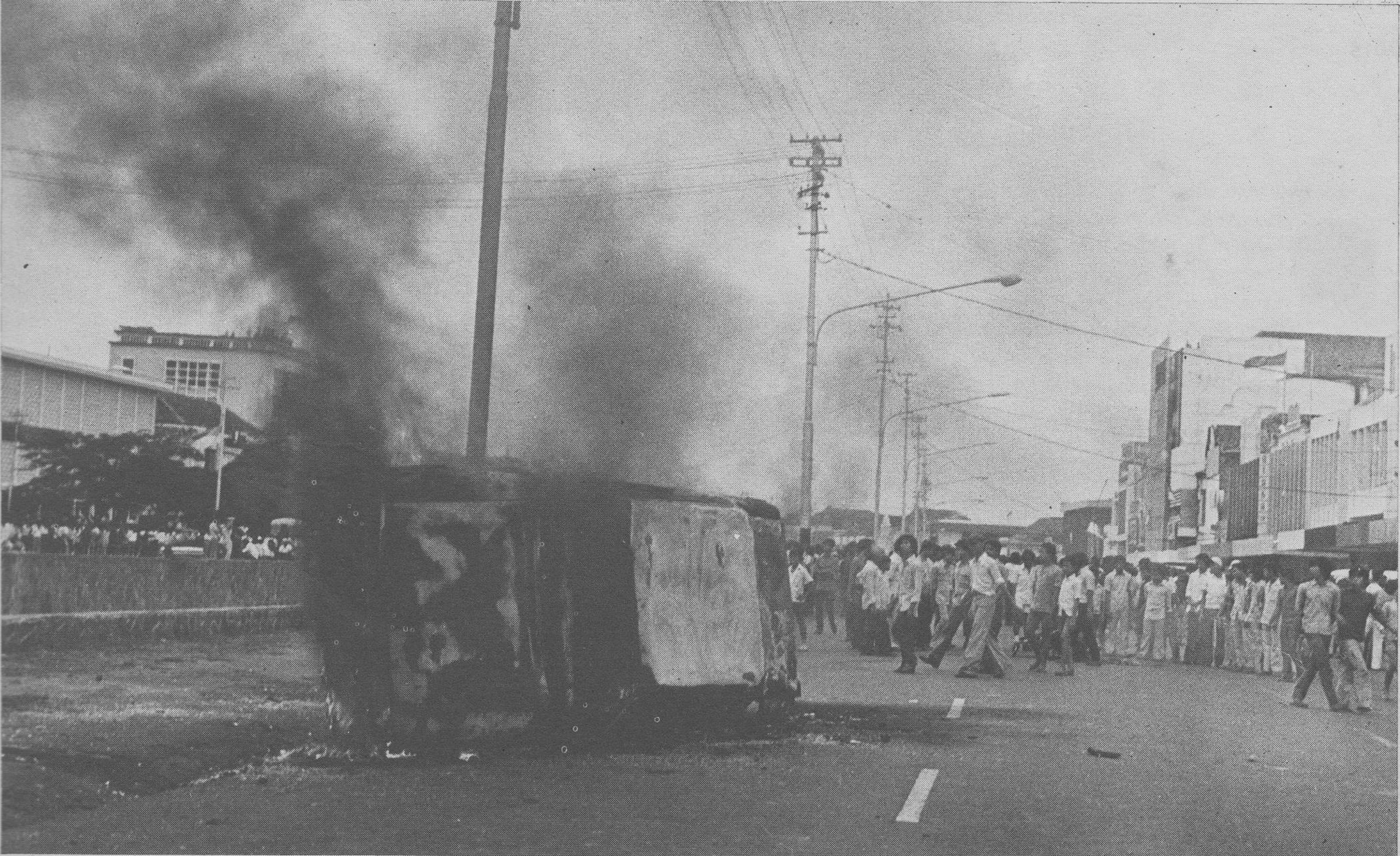
In the mid-1970s, RSS, BJS and VHP, played an active role during the protest movement against the Indira Gandhi government.
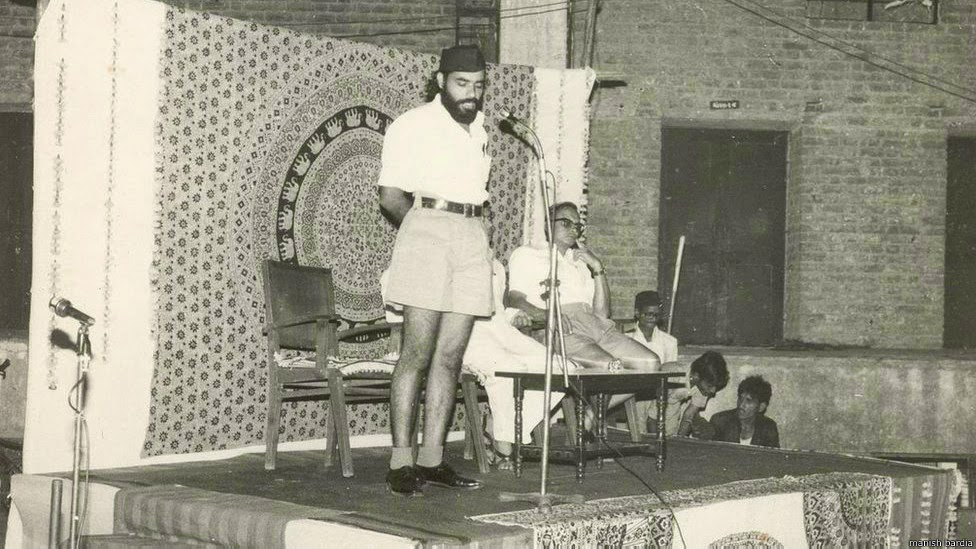
RSS activist, Narendra Modi, delivering a speech during the anti-Indira movement in 1974-75.
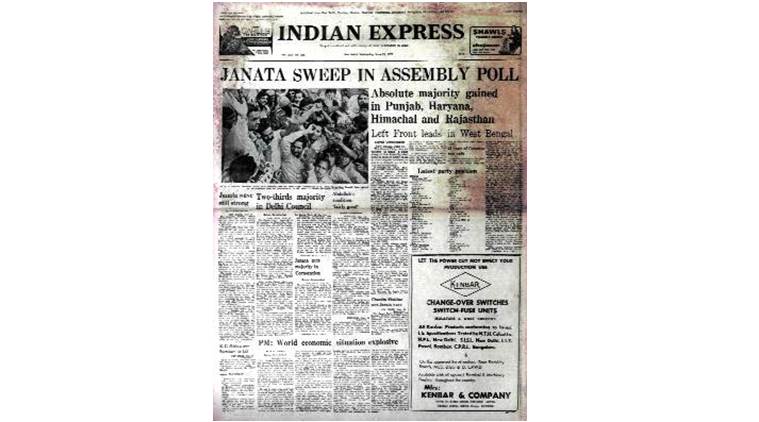
Just before the 1977 election, various anti-INC parties formed an electoral alliance, Janata Party. The alliance included leftist, centrist, secular as well as Hindu nationalist parties such as BJS. Janta defeated INC and formed a coalition government.
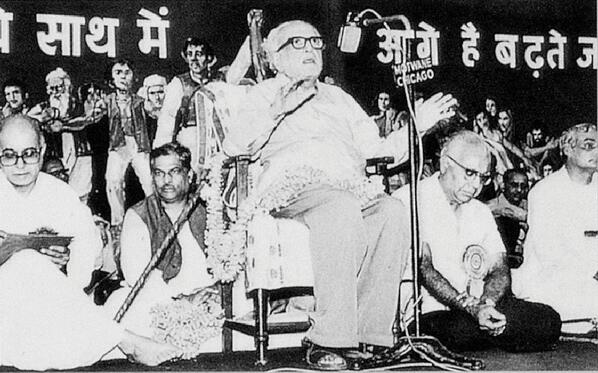
Due to severe ideological differences between the coalition parties, the Janta government fell in 1979. The BJS came out of the alliance and renamed itself as the Bharatiya Janta Party (BJP). It remained close to RSS and VHP and the Hindutva philosophy.
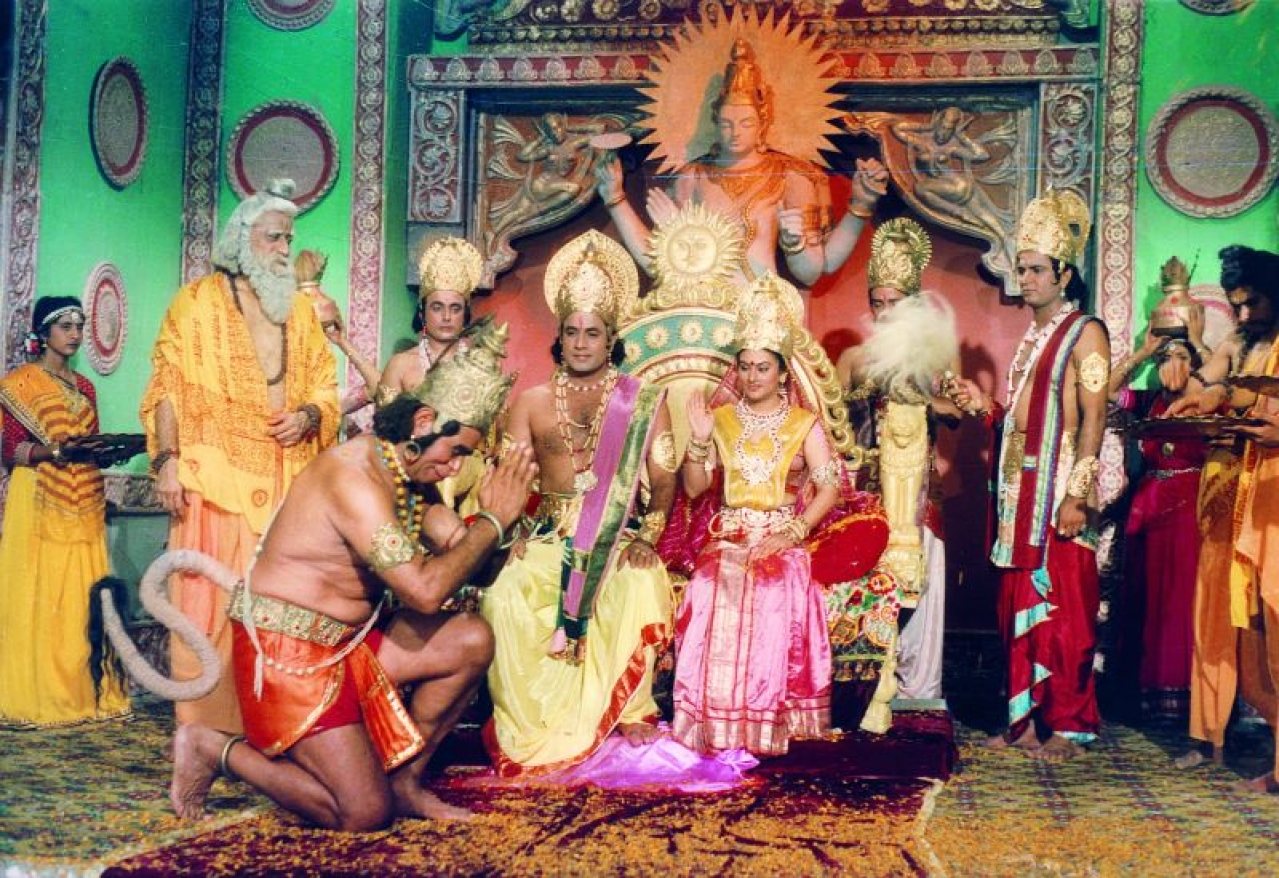
In the mid-1980s, some Indian political commentators began to suggest that the once fringe politics of Hindu nationalism was gaining traction due to the ‘corruption’ of various INC regimes. They also pointed out that the gradual liberalization of the economy was strengthening the urban middle-classes and a generation of Indians who were moving away from INC. These commentators noticed the growth of interest in religion in many young ‘secular’ Indians which may finally aid Hindu nationalist parties in winning elections. Even though such observations were largely discarded, the manner in which a 1987 TV serial based on Hindu mythology broke all previous viewing records in India, confirmed that indeed a shift was taking place in India’s political and religious discourse. Called Ramayana, the serial is now remembered as the TV phenomenon which glorified and mainstreamed Hindu nationalism in India.
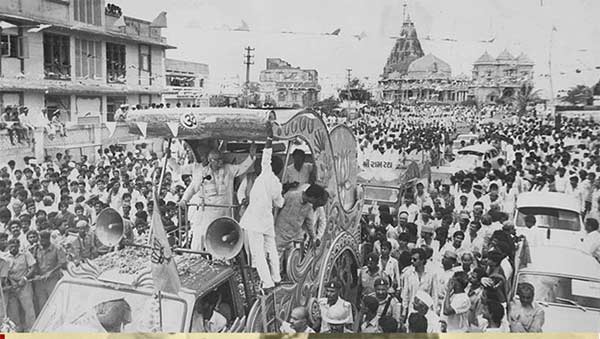
The BJP was fast becoming a major electoral threat to the INC. In 1990, it organised a Ram Rath Yatra. It was a 300 km long march towards the Babri Mosque in Ayodhya. The VHP had for long been campaigning for the destruction of the Mughal-era mosque. It believed that the mosque was built at the birth site of Hindu deity Ram. The march, led by BJP, and strengthened by thousands of activists from RSS and VHP, managed to demolish large portions of the mosuqe. Dozens were killed in the commotion. The next year the BJP almost doubled its percentage of votes during the 1991 election.
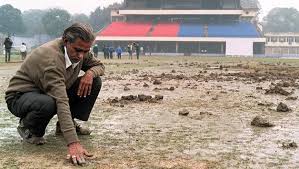
During the Pakistan cricket team’s tour of India in 1999, Shiv Sena activists destroyed the pitch in Delhi on which a Test match was to be played. Shiv Sena also tried to attack the visiting team at a hotel and threatened that it would ‘let loose venomous snakes’ in the stands of the stadiums if the tour was allowed to continue.
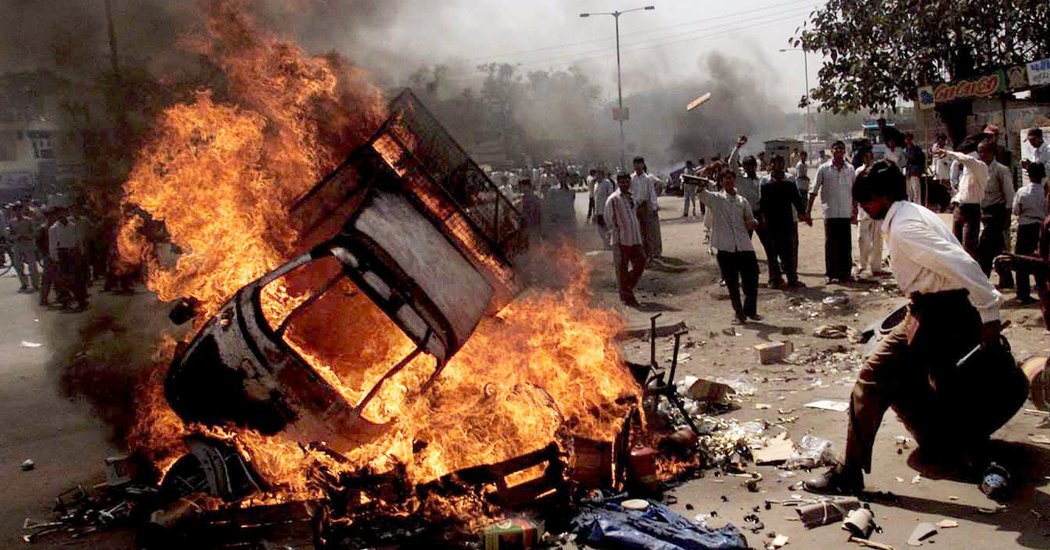
In 2002, 1,044 people were killed in three days of communal violence in the Indian state of Gujarat. 790 of them were Muslims. Gujarat had become a BJP stronghold. Modi graduated from RSS and became BJP’s CM in Gujarat. He was accused of fanning anti-Muslim violence and overseeing a ‘genocide.’ In 2005, he was denied a visa by the US which only lifted the travel ban on him after he became PM in 2014.
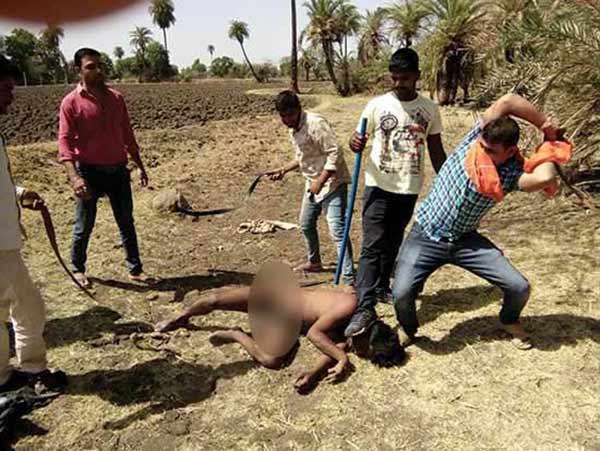
Ever since the 2014 election, BJP has won two straight terms under Modi. He finally blurred the line between the militant Hindutva ideology of RSS and the more pragmatic Hindu nationalism of BJP. He also started to slot Indian nationalism in the context of Hindu nationalism. This has emboldened radical Hindu nationalist groups and intelligentsia. Attempts are being made to completely re-write Indian history in the light of Hindu mythology and nationalism. But most alarming is the fact that violence against Muslims, Christians and Dalit has spiked by almost 400%.

Dayananda Saraswati was the founder of Arya Samaj, the Hindu reformist movement from which much of the future Hindu nationalist movements were derived. The Arya Samaj was established in 1875 as a response to the criticism targeted at certain Hindu rituals by British colonialists. The Samaj discouraged idol worship, the caste system and introduced a monotheistic Hinduism. The outfit also asked Hindus to shun controversial practices such as sati. Even though largely a social movement, the Samaj turned ‘communal’ when it embarked on an aggressive conversion campaign called Shuddhi. Its aim was to convert non-Hindus back to Hinduism because the Samaj believed most of India’s Muslims and Christians were originally Hindu. The Samaj accommodated and facilitated various early Hindu nationalists and was eventually declared a political organization by the British.

A group of Arya Samaj members in the late 19th century.

Hindu monk and reformist Swami Vivekananda in Chicago in 1893. He often travelled to Western countries to promote Hindu concepts of spiritualism, and yoga. He also saw the Hindus as a nation bounded by spirituality. He was hailed as a sage by Hindu nationalists.

VD Savarkar published The Essentials of Hindutva in 1923. He is often credited for coining the term, Hindutva. Himself an atheist, Savarkar explained Hindutva as a ‘Hinduness’ shaped by the indigenous history, geography, politics and culture of India. Savarkar thus treated Hinduism as a political and cultural idea which would shape a ‘Hindu Rashtra’ (Hindu nation) striving for ‘Akhand Bharat’ (United India). Savarkar emphasized that only those religions born in India, such as Hinduism, Buddhism, Jainism and Sikhism, could be part of Hindutva; and the followers of ‘alien faiths’ such as Islam and Christianity needed to be converted to any of the ‘indigenous Indian religions’ to qualify being called Indians; or to retain their converted faiths in Akhand Bharat, they needed to acknowledge their Hindu roots.

Savarkar with leaders of the Hindu Mahsabha, a Hindu nationalist group associated with the Indian National Congress (INC).

Keshav Baliram Hedgewar, founder of the extreme-right Hindu nationalist organization, the Rashtriya Swayamsevak Sangh (RSS). Formed in 1925, its intent was to unite the Hindus to shape a Hindu Rashtra. It emerged as a strict paramilitary organization that added a dimension of masculinity and militancy to Savarkar’s idea of Hindutva. RSS was involved in violent clashes with Muslims early on and considered them to be bigger enemies than the British. Many members of the Hindu Mahasabha also joined the RSS.

M. S. Golwalkar took over the leadership of the RSS in 1940. The outfit continued to grow under his leadership. RSS hardened its stance against Muslims while at the same time refused to take part in any movements against the British, including those by the INC. Golwalkar and the RSS did not hide their admiration for Italy’s fascist leader Benito Mussolini, and Germany’s Nazi leader, Adolph Hitler during World War 2.

Savitri Devi (birth name, Maximiani Portas) was a French author who converted to Hinduism during a visit to India in 1932. After renouncing her French citizenship in 1928, she adopted Greek nationality and also became an early supporter of Nazism. She converted to Hinduism in 1932 after meeting some Hindu nationalists in India who were also impressed by Nazism. In 1939, she wrote A Warning To Hindus in which she supported the demand for a Hindu Rashtra and action against the Muslims and Christians of India. During World War 2, she worked as a German spy in British India and declared that Hitler was the manifestation of Hindu deity Vishnu.

Hindu nationalist, Nathuram Godse, in court for assassinating Mahatma Gandhi in 1948. Godse had been radicalized during his stay in RSS and the Hindu Mahsabha. Both outfits had criticized Gandhi for ‘appeasing Muslims.’ Godse was executed in 1949.

The RSS protested against the Constitution of India that was passed by the Constituent Assembly in 1949. RSS bemoaned that the Constitution did not contain any laws from the sacred texts of Hinduism.

In 1951, the RSS helped former INC/Hindu Mahsabha member, Syama Prasad Mukherjee, to form the Bharatiya Jana Sangh (BJS). He had opposed the introduction of Article 370 in the Constitution which gave Jammu & Kashmir special status. BJS stood for the imposition of ‘Ram Raj,’ a nationwide ban on cow slaughter, and aggressive policies against China and Pakistan. Even though BJS could not win many seats during elections, it did attract support from big businesses that were against INC’s then socialist policies. By the 1960s, BJS had entirely become the political arm of RSS.

In 1960, during a lecture at the Gujarat University, Golwalkar said ancient Hindus had conducted successful experiments to breed perfect Hindus who were superior — as in strong and fair complexioned. Fact is, this idea was adopted by RSS from the Nazi concept of ‘Lebensborn’, a breeding program to create the ‘perfect Aryan Race.’

In 1964, Golwalkar formed another Hindu nationalist outfit, the Vishva Hindu Parishad (VHP). Led by the RSS, the VHP’s stated goal was to organize and consolidate the Hindu society according to Hindu Dharma.

In 1966, Bal Thackeray formed the Shiv Sena. Originally formed as an anti-migrant party in Mumbai, it gradually expanded its appeal by adopting Hindu nationalism and a rigid anti-Muslim stance.

In the mid-1970s, RSS, BJS and VHP, played an active role during the protest movement against the Indira Gandhi government.

RSS activist, Narendra Modi, delivering a speech during the anti-Indira movement in 1974-75.

Just before the 1977 election, various anti-INC parties formed an electoral alliance, Janata Party. The alliance included leftist, centrist, secular as well as Hindu nationalist parties such as BJS. Janta defeated INC and formed a coalition government.

Due to severe ideological differences between the coalition parties, the Janta government fell in 1979. The BJS came out of the alliance and renamed itself as the Bharatiya Janta Party (BJP). It remained close to RSS and VHP and the Hindutva philosophy.

In the mid-1980s, some Indian political commentators began to suggest that the once fringe politics of Hindu nationalism was gaining traction due to the ‘corruption’ of various INC regimes. They also pointed out that the gradual liberalization of the economy was strengthening the urban middle-classes and a generation of Indians who were moving away from INC. These commentators noticed the growth of interest in religion in many young ‘secular’ Indians which may finally aid Hindu nationalist parties in winning elections. Even though such observations were largely discarded, the manner in which a 1987 TV serial based on Hindu mythology broke all previous viewing records in India, confirmed that indeed a shift was taking place in India’s political and religious discourse. Called Ramayana, the serial is now remembered as the TV phenomenon which glorified and mainstreamed Hindu nationalism in India.

The BJP was fast becoming a major electoral threat to the INC. In 1990, it organised a Ram Rath Yatra. It was a 300 km long march towards the Babri Mosque in Ayodhya. The VHP had for long been campaigning for the destruction of the Mughal-era mosque. It believed that the mosque was built at the birth site of Hindu deity Ram. The march, led by BJP, and strengthened by thousands of activists from RSS and VHP, managed to demolish large portions of the mosuqe. Dozens were killed in the commotion. The next year the BJP almost doubled its percentage of votes during the 1991 election.

During the Pakistan cricket team’s tour of India in 1999, Shiv Sena activists destroyed the pitch in Delhi on which a Test match was to be played. Shiv Sena also tried to attack the visiting team at a hotel and threatened that it would ‘let loose venomous snakes’ in the stands of the stadiums if the tour was allowed to continue.

In 2002, 1,044 people were killed in three days of communal violence in the Indian state of Gujarat. 790 of them were Muslims. Gujarat had become a BJP stronghold. Modi graduated from RSS and became BJP’s CM in Gujarat. He was accused of fanning anti-Muslim violence and overseeing a ‘genocide.’ In 2005, he was denied a visa by the US which only lifted the travel ban on him after he became PM in 2014.

Ever since the 2014 election, BJP has won two straight terms under Modi. He finally blurred the line between the militant Hindutva ideology of RSS and the more pragmatic Hindu nationalism of BJP. He also started to slot Indian nationalism in the context of Hindu nationalism. This has emboldened radical Hindu nationalist groups and intelligentsia. Attempts are being made to completely re-write Indian history in the light of Hindu mythology and nationalism. But most alarming is the fact that violence against Muslims, Christians and Dalit has spiked by almost 400%.
